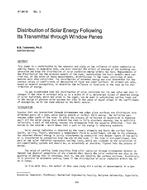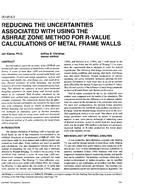This paper is based on findings resulting from ASHRAE Research Project RP-1404.
This paper summarizes findings of a recently completed ASHRAE research project (RP-1404) meant to develop and assess methods by which short-term in-situ monitoring of building energy use can be used as a workable alternative to yearlong data collection in monitoring and verification (M&V) projects. A new and simple approach, called the Dry- Bulb Temperature Analysis (DBTA) method, is proposed which, based on dry-bulb ambient temperature data alone, allows one to design a sound short-term monitoring protocol for verifying annual savings from M&V projects. It provides insights into how a model identified from a data period initiated at a certain month of the year and covering a specified number of months is likely to fare in terms of annual predictive ability.TheDBTAapproach can be used to identify the best two to three months of the year that would provide a data set rich enough for inverse statistical models to be identified, resulting in accurate daily predictions over the whole year. Finally, the DBTA approach can also be used in M&V projects that are constrained to start monitoring at a specific time of the year, wherein the intent is to determine the least monitoring length needed to obtain accurate predictive models.
Citation: ASHRAE Transactions – Volume 120, Part 1, New York, NY
Product Details
- Published:
- 2014
- Number of Pages:
- 9
- File Size:
- 1 file , 2.3 MB
- Product Code(s):
- D-NY-14-036


